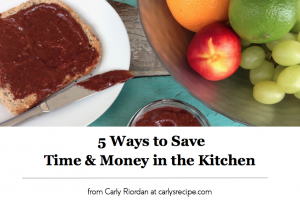Anyone with kids knows that there are times when you feel like you are asking all the time: What am I going to feed them?! The cycle of breakfast, morning tea, lunch, afternoon tea and dinner seems to roll around all too quickly leaving you either feeling like a champion or like you are failing in the ‘providing-nutritious-meals’ department.
We’ve gone through our fair share of pull-your-hair-out seasons trying to get our kids to eat a proper dinner. Here are a few tips that have helped us along the way.
Five tips to get kids to eat a healthy dinner
1. Break the snack cycle
The number one reason children won’t eat their dinner is that they are not properly hungry.
By dropping afternoon tea, children develop a proper appetite for healthy food when it arrives. If you’re worried they will starve (they won’t by the way) then bring dinner forward. There is nothing wrong with eating dinner at 4 pm and having a snack before bed, in fact, it makes good nutritional sense. You match maximum hunger with maximum nutrition.
On the other hand, by giving in to the 3-4pm starving frenzy position yourself for a loss when putting a good meal on the table a couple of hours later. The edge has already been taken off their hunger making wholesome foods look less appetising. They’ll say they’re not hungry, you’ll worry that they are not eating dinner (did you forget about the milkshake/crackers/other non-nutritional- snack they just polished off an hour ago?) then as a compromise ‘so they don’t starve overnight’ you’ll offer another non-nutritional snack…. say toast for example which they ‘miraculously’ have room for.
And so the cycle continues.
Nothing against toast or any of the other snacks mentioned but remember the goal of this post is helping you to get your kids to eat a healthy dinner.
If they must snack then replace this snack with something fresh (fruit or veggie sticks) and least they get a boost of nutrition and you can relax a little later on. Give afternoon tea a miss for it for three days and see if makes a difference.
2. Develop tastebuds for healthy food
It’s not just a matter of when children eat, but what they eat.
We need to teach children’s tastebuds what to enjoy. When you eat healthy food you crave healthy food. If children are snacking on processed foods, they’ll end up grazing from one snack to the next refusing anything nutritious along the way.
Processed snacks are pleasing to the palate. They have the right balance of sweet, salty and fats making them pleasurable (easy) to eat. If taste buds are adapted to these processed snacks then whole foods just won’t taste great.
Thankfully the opposite is also true. If you flush out the processed snacks and favour whole foods, taste buds will adapt and learn to enjoy the healthy food more.
Saying no to highly processed foods is effectively saying yes to developing their palate for a fresh healthy dinner.
3. Make dinner goals achievable and celebrate success
Sometimes as a parent you have to lower the bar and allow your child the feeling of success.
Lowering the bar means lowering the stress. Don’t be afraid of dropping the bar too low. Later when success is a habit you can begin to raise the bar again.
Here are some ideas:
- Instead of piling their plate with ‘what they should eat’ give them a small plate of what you know they will eat (even if it is not your ideal at the moment). Let them eat it, enjoy it, then praise them for it.
- Use the principle of ‘one’: try one mouthful, one spoonful, one piece etc. That’s it. It’s not overwhelming, it’s achievable. “You don’t have to eat a mountain of peas, just try one, if you like it then perhaps you’ll want another one. If not that’s fine, no worries. Just try it you might like it.” Tastebuds change and mature and foods often taste slightly different each time so encourage one try even if they are confident they won’t like it.
- Set them up for a win. We want them to be adventurous and try things but we need to offer things that they will enjoy most of the time. No one wants world war three every time you sit down to a meal. Lean on family favourites most night so that there are fewer battles and slowly introduce more variation. And remember as their palates develop, their plates will begin to look healthier and healthier.
- Break a meal down into steps: “First, eat your veggies, then you can have your meat and after that, you may have your choice of xyz (a favourite treat). Bribery has worked for years and for good reason—it works!
4. Enjoy mealtimes together without distractions
If you’re sitting with children while they eat they’ll be more focused and relaxed. A shared meal is a lost art these days. If it is too early for your own dinner then still sit with them and enjoy a cuppa or a small portion of what they are eating. The principle is still the same.
Minimising distractions is also a must. There will always be exceptions like family pizza night or occasions where a meal will be shared in front of the TV but these should be exceptions, not the rule. We know this, but why do we still do it?! Phones away, TV off, be present and engage in the moment. The eating will follow, I promise.
*Bonus points for allowing them to participate in the organisation and preparation of the family meal.
5. Provide no alternative
This is where it gets tough. Parent guilt can have you feeling like you are the worst parent in the world because you’ve sent your child to bed without dinner (shock horror). Before you go sending me emails in disgust, so far this has yet to happen in our house—though we have threatened to do it and have been prepared to follow through.
My point is, if you are willing to provide an alternative then children will always push for it so you need to stand your ground firmly but kindly. “This is dinner and there is nothing else. If you eat most of what is in front of you then we can talk about you having something else when you finish.”
Start with small steps and you’ll be winning in no time!

Good luck! And if you have any tips or tricks of your own then I’d love to hear them.
Carly xx
Subscribe now and receive 5 Ways to Save Time & Money in the Kitchen

